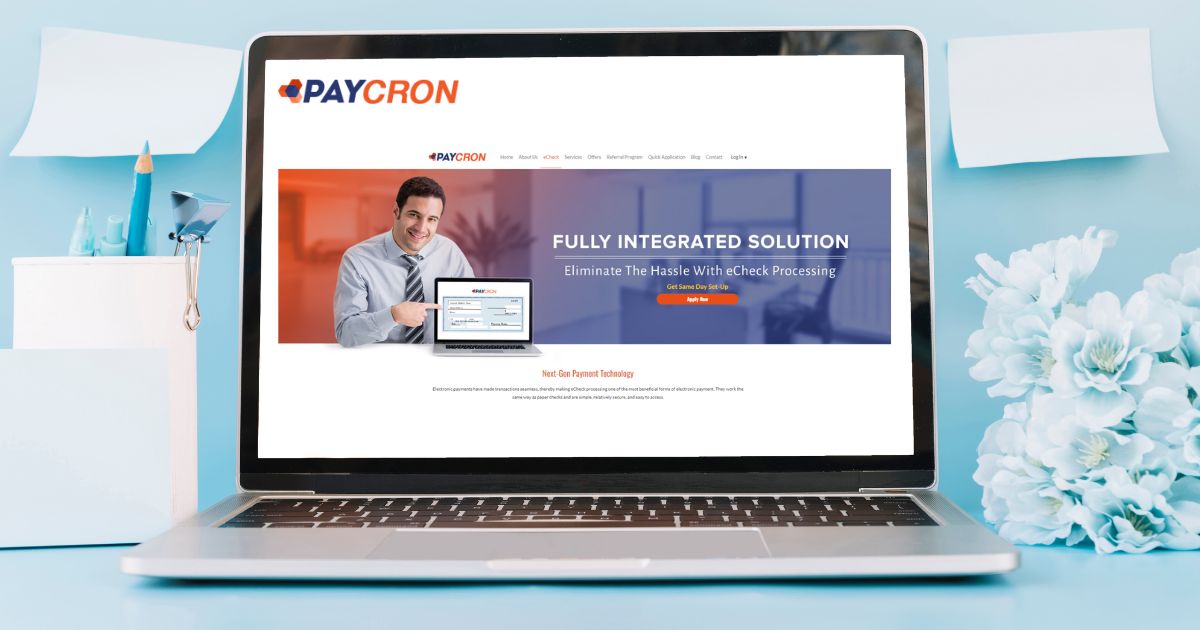
| March 12th, 2024 |
Tips for Choosing the Right Echeck Payment Processor for Your Startup Business in US!
In the digital age, offering customers convenient and secure payment options is crucial for any business, especially startups. One such payment method gaining popularity is eChecks, which provide a hassle-free way for businesses to accept payments electronically. If you’re a startup looking to streamline your payment processes and cater to a broader customer base, setting up echeck payment processing could be the solution you need. However, with numerous echeck payment processors available in the market, choosing the right one can be overwhelming. To help you navigate this decision and set up echeck payment processor successfully, we’ve compiled a comprehensive guide with valuable tips and insights.
Understanding Echeck Payment Processing —
Before delving into the tips for selecting the right echeck payment processor, let’s first understand what echeck payment processing entails. eChecks, or electronic checks, are digital versions of traditional paper checks. Instead of physically writing and mailing a check, customers can authorize payments electronically, allowing funds to be transferred directly from their bank accounts to the merchant’s account.
Tips for Choosing the Right Echeck Payment Processor —
Compatibility and Integration:
Ensure that the echeck payment processor seamlessly integrates with your existing payment system or e-commerce platform. Compatibility issues can lead to technical glitches and hamper the efficiency of your payment processing.
Security Measures:
Prioritize security when selecting an echeck payment processor. Look for processors that comply with industry standards such as PCI DSS (Payment Card Industry Data Security Standard) and offer encryption and fraud detection features to safeguard sensitive customer information.
Cost and Pricing Structure:
Compare the pricing models of different echeck payment processors. Look beyond the initial setup fees and consider factors such as transaction fees, monthly minimums, and chargeback fees. Choose a processor that offers transparent pricing with no hidden costs.
Speed of Settlement:
Evaluate the settlement period offered by the echeck payment processor. Opt for a processor that provides fast settlement times, allowing you to access funds quickly and improve cash flow for your startup.
Customer Support:
Assess the quality of customer support provided by the echeck payment processor. Prompt and responsive customer support can be invaluable, especially during technical issues or payment disputes.
Customization Options:
Look for echeck payment processors that offer customization options to tailor the payment experience according to your business needs. This includes branded payment pages, customizable reporting tools, and flexibility in payment processing options.
Scalability and Growth Potential:
Choose an echeck payment processor that can accommodate the growth of your startup. Consider factors such as scalability, international expansion capabilities, and support for multiple currencies if you have plans for future growth.
Setting Up Echeck Payment Processing for Your Startup —
Now that you’ve chosen the right echeck payment processor for your startup, it’s time to set up echeck payment processing seamlessly:
Gather Required Documentation:
Prepare necessary documents such as your business license, bank account information, and incorporation documents. This information will be needed during the application process with the echeck payment processor.
Complete Application Process:
Fill out the application form provided by the echeck payment processor accurately and submit it along with the required documentation. Be prepared for a thorough review process, which may include background checks and underwriting procedures.
Integrate Payment Gateway:
Once your application is approved, integrate the echeck payment processor’s payment gateway with your website or e-commerce platform. Follow the integration instructions provided by the processor or seek assistance from their technical support team if needed.
Test Transactions:
Conduct test transactions to ensure that the echeck payment processing system is functioning correctly. Test various scenarios, including successful payments, declined transactions, and refunds, to identify any potential issues and address them promptly.
Train Staff:
Provide training to your staff members on how to use the echeck payment processing system effectively. Ensure that they are familiar with the payment gateway interface, transaction procedures, and troubleshooting steps to handle customer inquiries or issues efficiently.
Monitor Performance:
Regularly monitor the performance of your echeck payment processing system, including transaction success rates, processing times, and customer feedback. Stay proactive in addressing any issues or concerns that arise to maintain a smooth payment experience for your customers.
Stay Updated:
Keep abreast of the latest developments in echeck payment processing technology and regulations. Periodically review your echeck payment processor’s services and explore opportunities for optimization or enhancement to stay competitive in the market.
Conclusion —
Implementing echeck payment processing can offer numerous benefits for startups, including improved cash flow, enhanced security, and greater convenience for customers. By following the tips outlined in this guide and diligently setting up echeck payment processing for your business, you can streamline your payment processes and lay a solid foundation for future growth and success in the competitive business landscape.